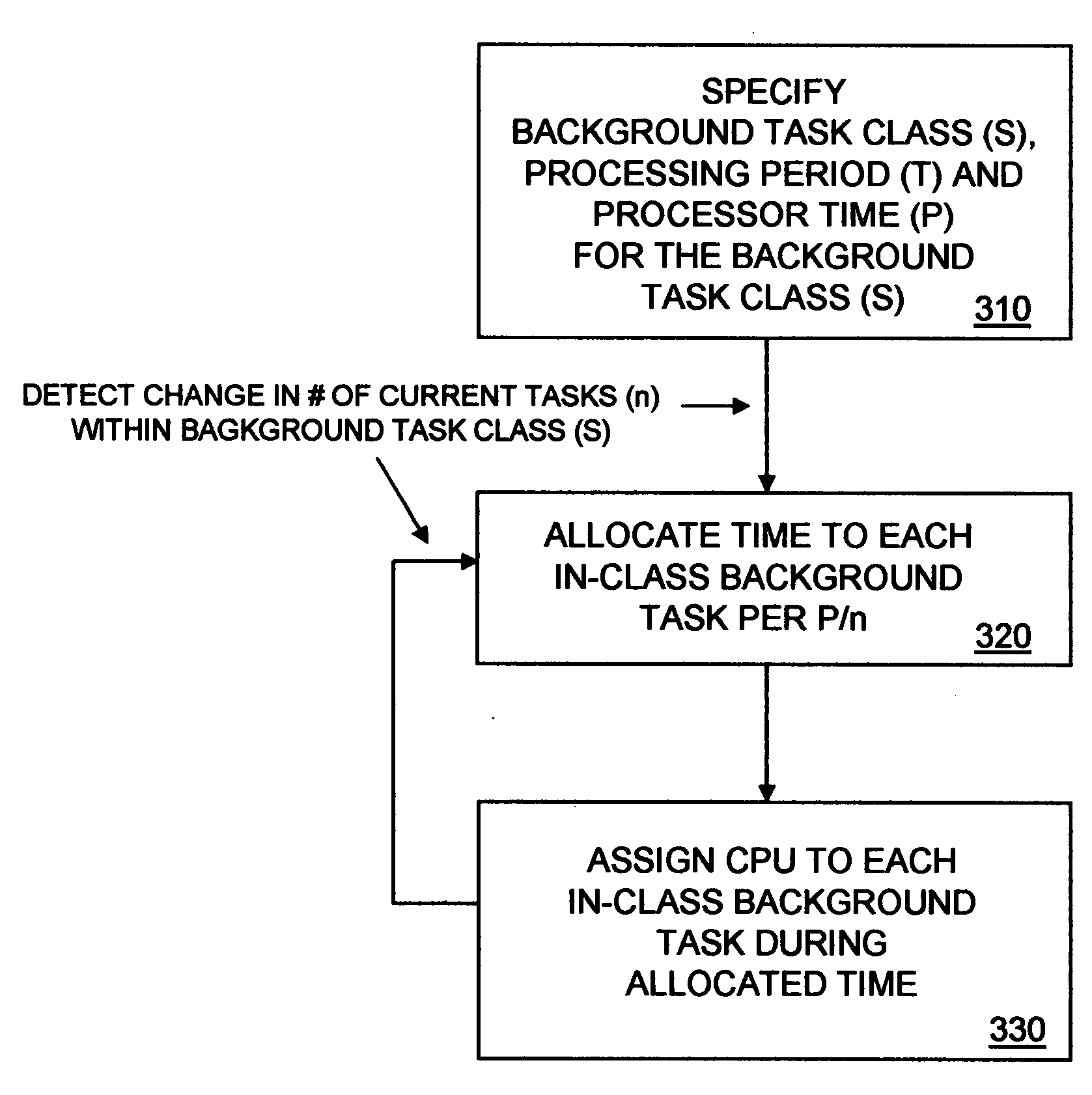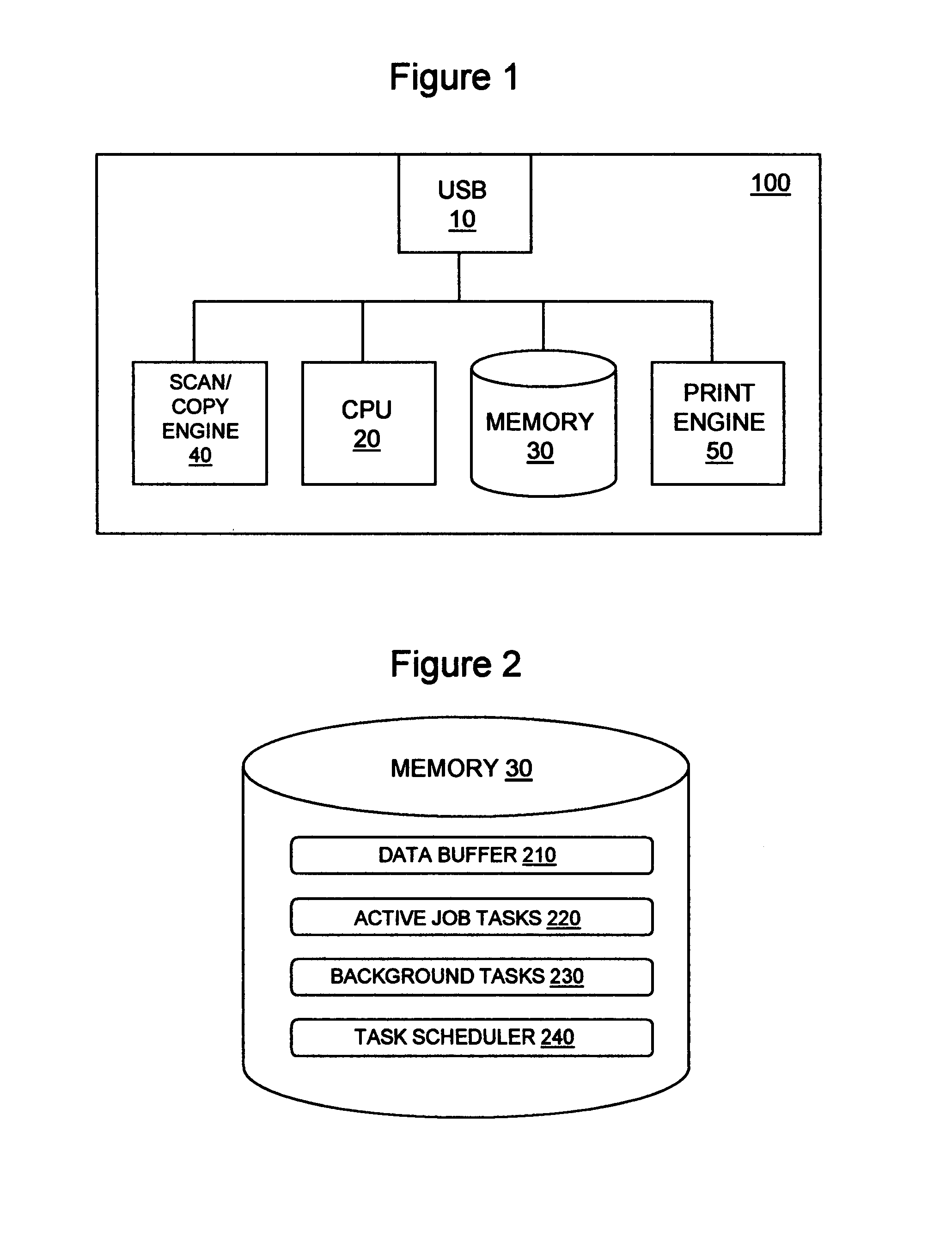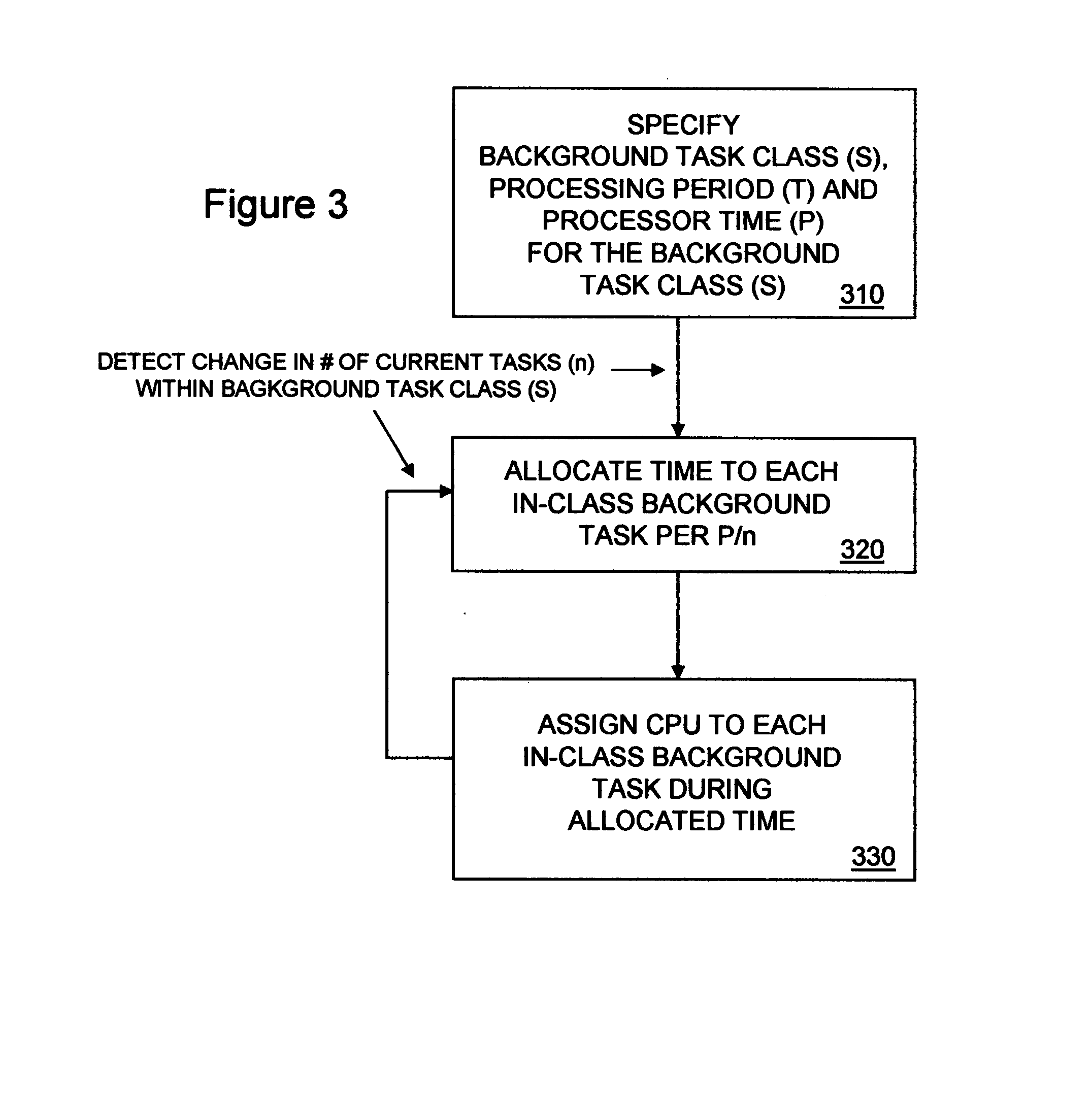Deterministic task scheduling in a computing device
a computing device and task technology, applied in the direction of multi-programming arrangements, program control, instruments, etc., can solve the problems of consuming a lot of processing time, affecting the active job, and generally not being able to reduce the allocation of resources, so as to prevent the starvation of background tasks
- Summary
- Abstract
- Description
- Claims
- Application Information
AI Technical Summary
Benefits of technology
Problems solved by technology
Method used
Image
Examples
Embodiment Construction
[0014]In FIG. 1, a multifunction printer (MFP) 100 is shown. MFP 100 supports multiple functions, such as printing, scanning and copying. MFP 100 has a universal serial bus (USB) port 10 that communicatively couples MFP 100 with a computing device, such as a personal computer, a workstation or a server, via a USB cable. MFP 100 receives commands and print data via USB port 10. Internal to MFP 100, USB port 10 is communicatively coupled with a processor (CPU) 20, a memory 30 a scan / copy engine 40 and a print engine 50. Scan / copy engine 40 includes scanner / copier logic, such as one or more integrated circuits (ICs), and a mechanical section for performing a scanner and copier functions. For example, scan / copy engine 40 may have a line image sensor mounted on a movable carriage for optically scanning a document under the control of a scanner IC and storing the scanned document into memory 30. Print engine 50 includes printer logic, such as one or more ICs, and a mechanical section for ...
PUM
 Login to View More
Login to View More Abstract
Description
Claims
Application Information
 Login to View More
Login to View More - R&D
- Intellectual Property
- Life Sciences
- Materials
- Tech Scout
- Unparalleled Data Quality
- Higher Quality Content
- 60% Fewer Hallucinations
Browse by: Latest US Patents, China's latest patents, Technical Efficacy Thesaurus, Application Domain, Technology Topic, Popular Technical Reports.
© 2025 PatSnap. All rights reserved.Legal|Privacy policy|Modern Slavery Act Transparency Statement|Sitemap|About US| Contact US: help@patsnap.com



